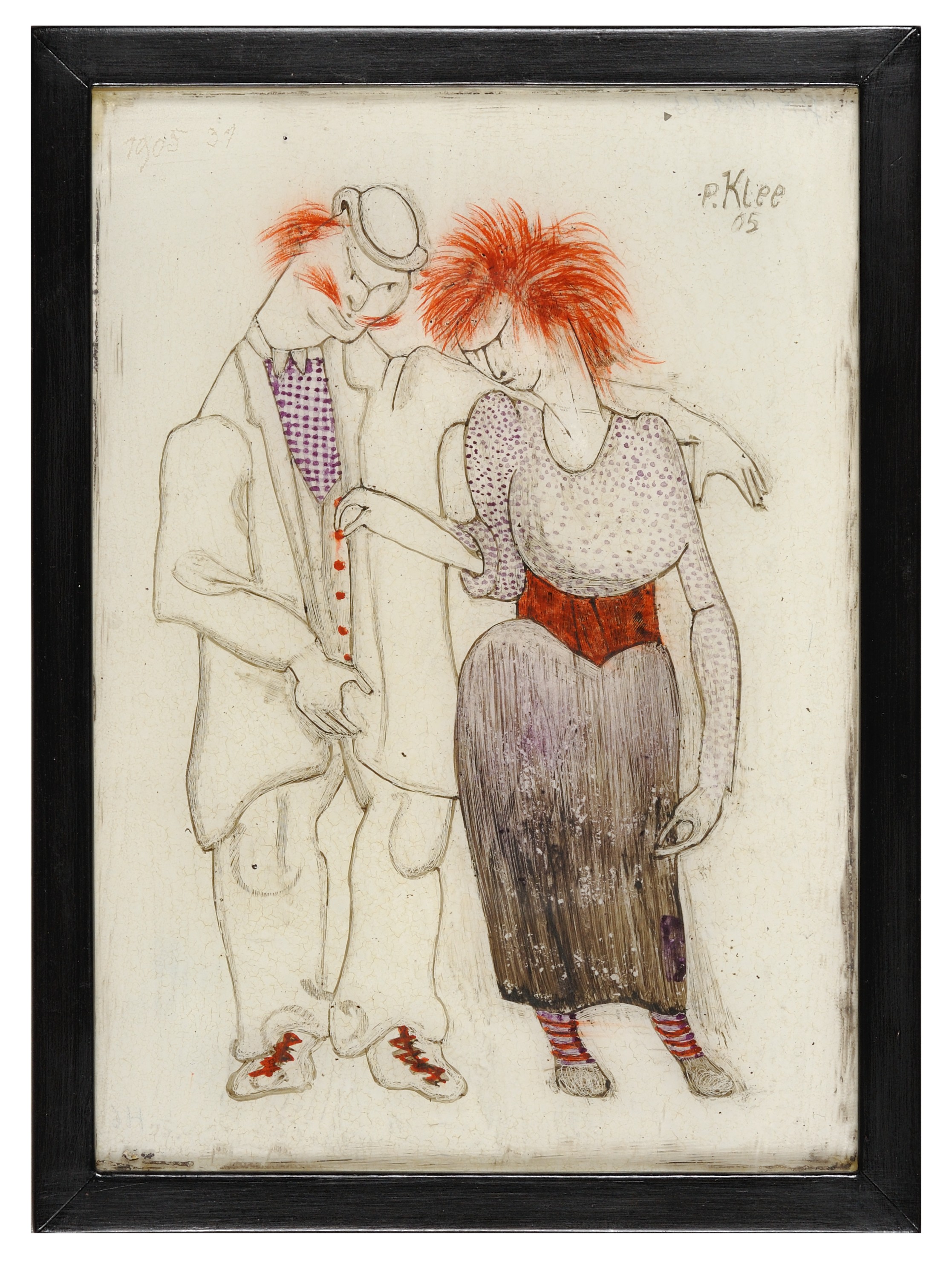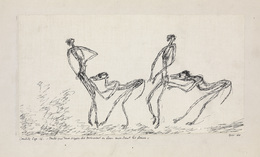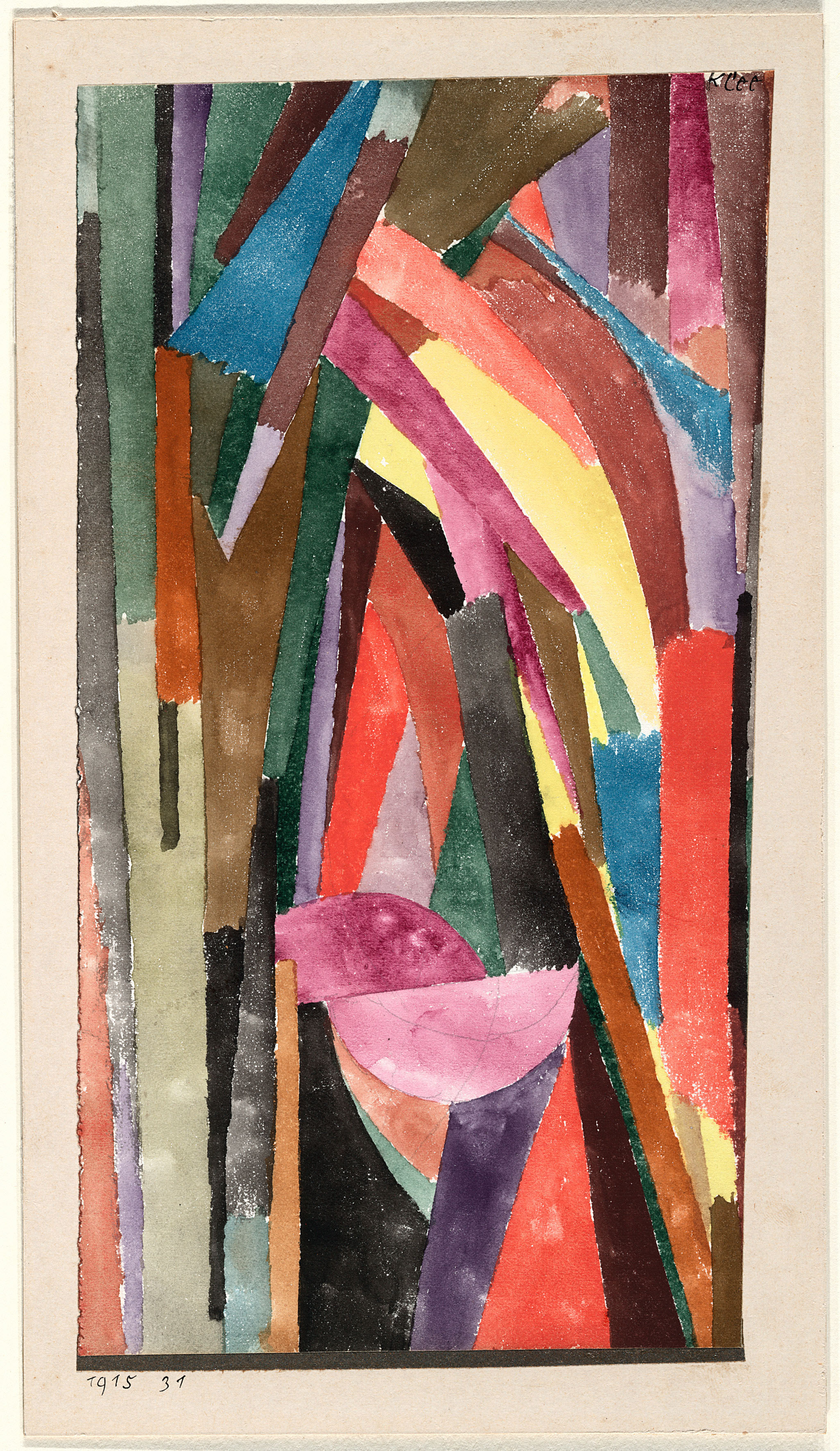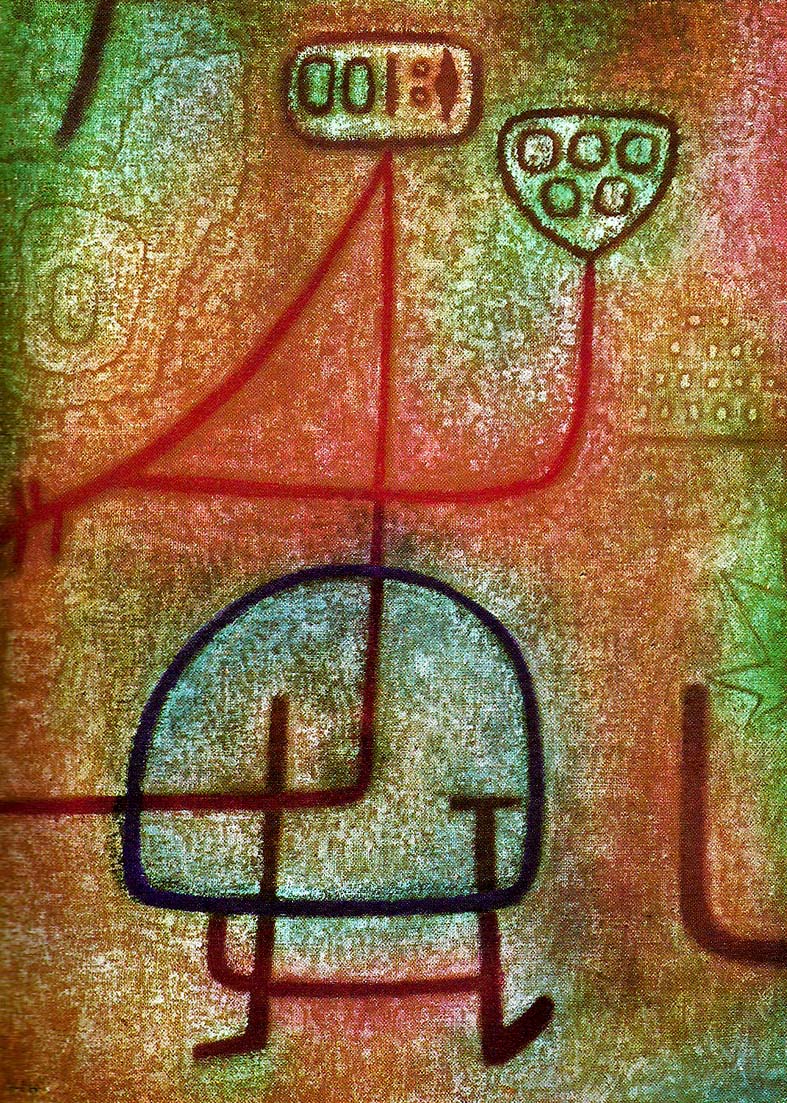6 APRIL - 1 AUGUST 2016
The Centre Pompidou is proposing a journey through the
work of a singular figure in modernity and one of the
20th century’s most iconic artists: Paul Klee. This is the first major in
France since the 1969 exhibition at the Musée National d’Art Moderne.
Featuring two hundred and thirty works loaned by the
Zentrum Paul Klee in Bern
and various major international and private
collections, this retrospective casts a fresh look
on Klee’s work. It sheds
light on the way he used irony through an approach originating in the early
German Romanticism, consisting in a constant shift between a satire and the
affirmation of an absolute, finite and infinite, real and ideal. In this
respect, Klee’s use of irony is inspired by the philosopher Friedrich Schlegel:
«Everything in it must be a joke, and everything must be serious: everything
must be offered up with an open heart, and profoundly concealed.»
This new
approach also explores Klee’s relationship with his peers and the artistic
movements of his time.
The exhibition is divided into seven thematic sections
highlighting each stage in Klee’s artistic development:
I. Satirical beginnings
After his studies in Munich, Klee spent the winter of
1901-1902 in Italy. Faced with the grandeur
of Antiquity and its Renaissance,
the young artist became aware of his own place in history: that
of an imitator
obliged to continue a now outmoded classical idealism. His solution was satire:
a modern mode of expression that could assert both high ideals and a critical
view of the state of the world.
« I serve beauty by depicting its enemies
(caricature and satire) », he wrote in his diary.
Based on this dialectical
inversion central to Romantic irony, Klee began producing essentially graphic
works, in which he expressed his often scathing thoughts on relations between
the sexes, his relationship to society and his position as an artist. It was
also a time when he experimented with techniques, trying out reverse glass painting
and exploring plastic forms. This period culminated in the illustrations
for Candide
ou l’Optimisme by Voltaire, a writer much venerated by Klee.
2. Klee and Cubism
Klee discovered Cubism in Munich in late 1911, and a
year later during his stay in Paris. From then on, the formal inventions of
Cubism nourished his pictorial explorations, often in a dialectical way. Whilst
using a prismatic vocabulary, Klee’s childlike drawings are nevertheless an
ironic representation of the Cubist decomposed figures that he found deprived
of all vitality. In the series of watercolours painted during his formative
stay in Tunis in 1914, he introduced effects of distance – for example by
leaving
the vertical bands of white paper that corresponded to the marks left
by the elastic bands he used when painting outdoors. This distancing technique
was also evident in his highly singular approach, where
he cut up finished compositions into two or more parts,
turning them into independent works
or combining them differently on new
supports. Here Klee asserted a creative impulse whose roots lay paradoxically
in the act of destruction.
3. Mechanical theatre
At the end of the First Wold War, Klee’s work began to
feature the imagery of mechanised figures. Inspired by his experience in
aviation maintenance, Klee transformed birds into planes, often in attack
formation. He started using oil transfers: an indirect technique that
depersonalised the lines of the drawing. The aesthetics of the machine were
then much in vogue in Dadaist circles, from Francis Picabia to Raoul Hausmann.
Klee’s contact with the Zurich Dadaists revived his interest in the
representation
of machines and equipment, and the effects produced by their
mechanisms. As a teacher at the Bauhaus, he began to create hybrid beings,
half-human, half-object. Through mechanical simplification, he used the motifs
of automatons and puppets to condemn the loss of vitality and the narrowing of
inner life brought about by industrial rationalisation, asking ironically «
When will machines start bearing children? »
4. Klee and Constructivisms
The new watchword proclaimed in 1923 by Walter Gropius,
the founder of the Bauhaus («Art and technology: a new unity») marked a turning
point for the school. Klee was highly responsive to it.
He then embarked upon a
tightrope act, seeking a balance between his intuitive approach and the new
contemporary dogmas. He took up certain aspects of modernist expression such as
the grid, while sidestepping its rigidity. His paintings, structured by squares,
in turn evoked musical rhythms, stained glass painting, tapestries,
multi-coloured flowerbeds and aerial views of fields. The Bauhaus’s move
to the
modern city of Dessau in 1925 further induced the school’s movement towards the
use
of photographic techniques, ardently supported by its new teacher, László
Moholy-Nagy. Klee reacted in his own way: rational aesthetics acted as a foil,
enabling him to assert his antagonistic position more firmly. In his view,
«laws should only provide a basis for self-fulfilment.»
5. Backward glances
In his last years at the Bauhaus, Klee began to multiply
references to different epochs of the past. Inspired by his travels and the
many books and articles he read on the subject, he introduced pictorial
elements reminiscent of ancient mosaics, Egyptian civilisation and figures and
signs carved on the walls of Palaeolithic caves. The prehistoric dimension in
itself was a recurrent component in his imagination: fossils, caves, mountains
in the process of forming, primitive plants and animals, sacred stones,
undecipherable inscriptions on rocks and such like all allude to the past in
varying degrees. Klee used imitation as a method of appropriation. The
reproduction of the effects of time on both the object (wear and tear, mould,
erosion) and its content imbued his works with a sense of parody. While Klee
drew
on the repertory of signs produced by «primitive» or non-Western cultures,
he was only imitating
the principles of their original structure.
6. Klee and Picasso
Picasso represented a particular challenge for Klee. His
work dialogued with the Spanish artist’s with particular intensity at two
periods in his life: at the beginning of his career in around 1912, and above
all during the 1930s, after he saw the 1932 retrospective at the Kunsthaus in
Zurich. Here Klee discovered Picasso’s « Surrealism », particularly his large
paintings of female figures and his biomorphic metamorphoses: two new
directions that powerfully influenced Klee after the Bauhaus period, and stimulated the work of his final years.
This
confrontation was nourished by the publication of numerous articles on Picasso
in reviews such as Les Cahiers d’Art, to which Klee subscribed. After
his first visit to Picasso’s Paris studio in 1933,
the two artists met up at Klee’s
house in Bern in 1937. That virtually silent moment revealed the tensions
between these two giants of modernity. Their dialogue was imaginary, made up of
appropriation
and opposition, of secret admiration and critical irony.
7. The crisis years
Hitler’s coming to power in 1933 marked the end of
Klee’s career in Germany and forced him into exile in Bern. He responded with a
series of drawings that transposed the country’s predominant angst into violent
cross-hatching. Von der Liste gestrichen [Struck from the list], a
self-portrait in the form
of a pseudo-Cubist African mask, treats Nazis
politics with irony by parodying their own criteria
for exclusion. Klee liked to counter terror through a
childlike, playful iconography, where signs are transformed into stickmen
dancing not in joy but in fear. These figures may well allude to the general
physical training encouraged by the Nazis. Their dislocated appearance
reflected another source
of anxiety for the artist: the serious illness that
was beginning to stiffen his bodily movements. In 1935, Klee developed
scleroderma, a wasting disease that gradually mineralised his body. As a
result,
he simplified his graphic language, which now expressed
contemporary suffering – both humanity’s and his own – with elementary force.
Exhibition catalogue
by Angela Lampe
A publication with 312 pages and 300
illustrations, featuring new articles by internationally recognised Paul Klee
specialists. Format: 23.5 x 30 cm. Hardback. Price: €44.90.
From his satirical beginnings to his reinterpretation of
Cubism, productive exchanges with Dada
and inversion of the Bauhaus dogmas to
his final years of crisis, throughout his career Paul Klee endeavoured to
assert total freedom with regard to the modernisms of his time, readily taking casting
an ironic eye on their principles and disrupting their systems. The
retrospective staged by the Centre Pompidou Paul Klee takes a completely new
look at his entire output through the prism of Romantic irony. This
richly-illustrated catalogue contains contributions from leading specialists on
Klee and sheds light on the subversive character of his work.
PAUL KLEE Paul Klee, Ohne Titel (Zwei Fische, zwei Angelhaken, zwei Würmer Pen and watercolour on card 16,2 x 23,2 cm
PAUL KLEE Verkommenes Paar Couple mauvais genre, 1905 Reverse glass painting 18 x 13 cm Zentrum Paul Klee, Berne © Adagp, Paris 2016
PAUL KLEE Candide, chapitre 16: Tandis que deux singes les suivaient en leur mordant les fesses, 1911 Pen on paper on card 12,7 x 23,6 cm Zentrum Paul Klee, Berne © Adagp, Paris 2016
PAUL KLEE (Lustig?) [Lachende Gothik] [(Drôle?) [Gothique joyeux]], 1915 Watercolour and pastel on paper, metallic paper borders on card © Adagp, Paris 2016
28,9 x 16,5 cm The Museum of Modern Art, New York © 2016. Digital Image, The Museum of Modern Art, New York/Scala, Florence © Adagp, Paris 2016
PAUL KLEE Vorführung des Wunders Présentation du miracle,1916 Gouache, pen and ink on prepared fabric, mounted on card 29,2 × 23,6 cm The Museum of Modern Art, New York © 2016. Digital Image, The Museum of Modern Art, New York/Scala, Florence © Adagp, Paris 2016
PAUL KLEE Angelus novus, 1920 Oil and watercolour on paper on card 31,8 x 24,2 cm The Israel Museum, Jérusalem © Adagp, Paris 2016
PAUL KLEE Landschaft bei E. (in Bayern) Paysage près de E. (en Bavière), 1921 Oil and pen on paper on card 49,8 x 35,2 cm © Adagp, Paris 2016
PAUL KLEE Bild aus dem Boudoir Image tirée du boudoir, 1922 Copy in oil and watercolour on paper on card 33,2 x 49 cm Zentrum Paul Klee, Berne © Adagp, Paris 2016
PAUL KLEE (Jugendlicher) Schauspieler=Maske [Masque de (jeune)=comédien], 1924 Oil on canvas on card nailed to wood 36,7 x 33,8 cm © Adagp, Paris 2016
PAUL KLEE von der Liste gestrichen Rayé de la liste, 1933 Oil on paper on card 31.5 x 24 cm
Zentrum Paul Klee, Berne Donation Livia Klee © Adagp, Paris 2016
PAUL KLEE Der Schöpfer Le Créateur, 1934 Oil on canvas 42 x 53.5 cm Zentrum Paul Klee, Berne © Adagp, Paris 2016
PAUL KLEE Dame Daemon Dame Démon, 1935 Oil and watercolour on prepared hessian canvas on card 150 x 100 cm Zentrum Paul Klee, Berne © Adagp, Paris 2016
PAUL KLEE Tänze vor Angst Danses sous l’empire de la peur, 1938 Watercolour on paper on card 48 x 31 cm Zentrum Paul Klee, Berne © Adagp, Paris 2016
PAUL KLEE Insula dulcamara, 1938 Oil and colour glue paint on paper on hessian canvas 88 x 176 cm Zentrum Paul Klee, Berne© Adagp, Paris 2016
PAUL KLEE Liebeslied bei Neumond Chant d’amour à la nouvelle lune,1939 Watercolour on hessian canvas 100 x 70 cm Zentrum Paul Klee, Berne © Adagp, Paris 2016
PAUL KLEE La Belle jardinière, 1939 Oil and tempera on hessian canvas 95 x 71 cm Zentrum Paul Klee, Berne © Adagp, Paris 2016
PAUL KLEE Übermut Exubérance, 1939 Oil and colour glue paint on paper on hessian canvas 101 x 130 cm Zentrum Paul Klee, Berne © Adagp, Paris 2016
PAUL KLEE Angstausbruch III Explosion de peur III, 1939 Watercolour on prepared paper on card 63.5 x 48.1 cm Zentrum Paul Klee, Berne © Adagp, Paris 2016
,_1901.png)










.jpg!Large.jpg)



